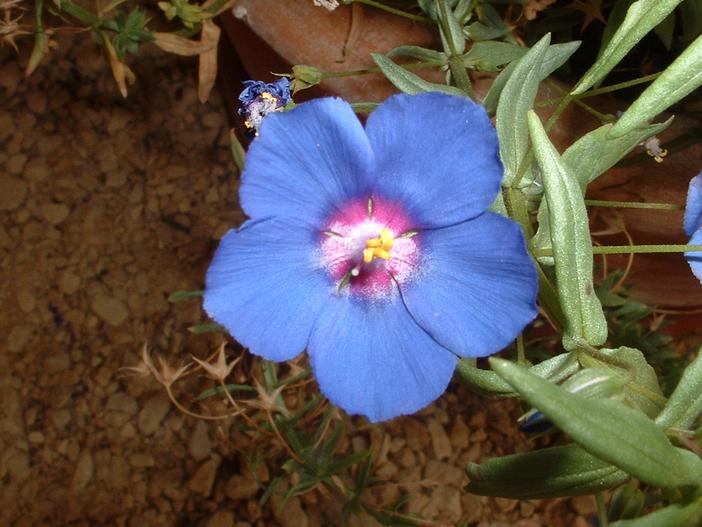Blue Pimpernel
(Anagallis monelli)
Blue Pimpernel (Anagallis monelli)
/
/

Grezty~commonswiki assumed
Public domain
Image By:
Grezty~commonswiki assumed
Recorded By:
Copyright:
Public domain
Copyright Notice:
Photo by: Grezty~commonswiki assumed | License Type: Public domain | License URL: https://creativecommons.org/public-domain/ | Uploader: Grezty~commonswiki | Publisher: Wikipedia Commons


























Estimated Native Range
Summary
Anagallis monelli, commonly known as Blue Pimpernel or Garden Pimpernel, is a low-growing perennial herb native to Europe, where it thrives in open, sunny habitats with well-drained soils. It is often found in coastal areas, fields, and open woodlands. Anagallis monelli has trailing stems and typically grows to a height of 6-12 inches (15-30 cm) with a similar spread. The plant is known for its vibrant blue or orange flowers, which bloom from late spring to early fall, adding a splash of color to the garden. The flowers are particularly showy and attract pollinators. A red-flowered cultivar was developed through breeding at the University of New Hampshire, expanding the plant’s ornamental appeal.
Blue Pimpernel is valued for its ease of maintenance and its ability to fill in spaces quickly, making it suitable for ground cover, rock gardens, and border fronts. It has gained the Royal Horticultural Society’s Award of Garden Merit, indicating its excellence for garden use. While it prefers full sun, it can tolerate part shade and requires medium to high amounts of water. It is adaptable to various soil types, provided they have slow to medium drainage. However, gardeners should be cautious as Anagallis monelli can be extremely invasive outside its native range, including in the United States, and may outcompete native species.CC BY-SA 4.0
Blue Pimpernel is valued for its ease of maintenance and its ability to fill in spaces quickly, making it suitable for ground cover, rock gardens, and border fronts. It has gained the Royal Horticultural Society’s Award of Garden Merit, indicating its excellence for garden use. While it prefers full sun, it can tolerate part shade and requires medium to high amounts of water. It is adaptable to various soil types, provided they have slow to medium drainage. However, gardeners should be cautious as Anagallis monelli can be extremely invasive outside its native range, including in the United States, and may outcompete native species.CC BY-SA 4.0
Plant Description
- Plant Type: Herb
- Height: 0.3-0.8 feet
- Width: 1-1.5 feet
- Growth Rate: Moderate
- Flower Color: Blue
- Flowering Season: Spring, Summer, Fall
- Leaf Retention: Deciduous
Growth Requirements
- Sun: Full Sun
- Water: Medium, High
- Drainage: Slow, Medium
Common Uses
Bee Garden, Bird Garden, Border Plant, Butterfly Garden, Deer Resistant, Groundcover, Hummingbird Garden, Low Maintenance, Potted Plant, Rabbit Resistant, Rock Garden
Natural Habitat
native to Europe, where it thrives in open, sunny habitats with well-drained soils
Other Names
Common Names: Flaxleaf Pimpernel
Scientific Names: , Anagallis monelli, Anagallis arvensis, Lysimachia arvensis subsp. arvensis, Anagallis phoenicea, Anagallis arvensis subsp. phoenicea, Anagallis arvensis f. arvensis, Anagallis arvensis f. lilacina, Anagallis caerulea, Anagallis arvensis var. phoenicea
GBIF Accepted Name: Lysimachia arvensis subsp. arvensis